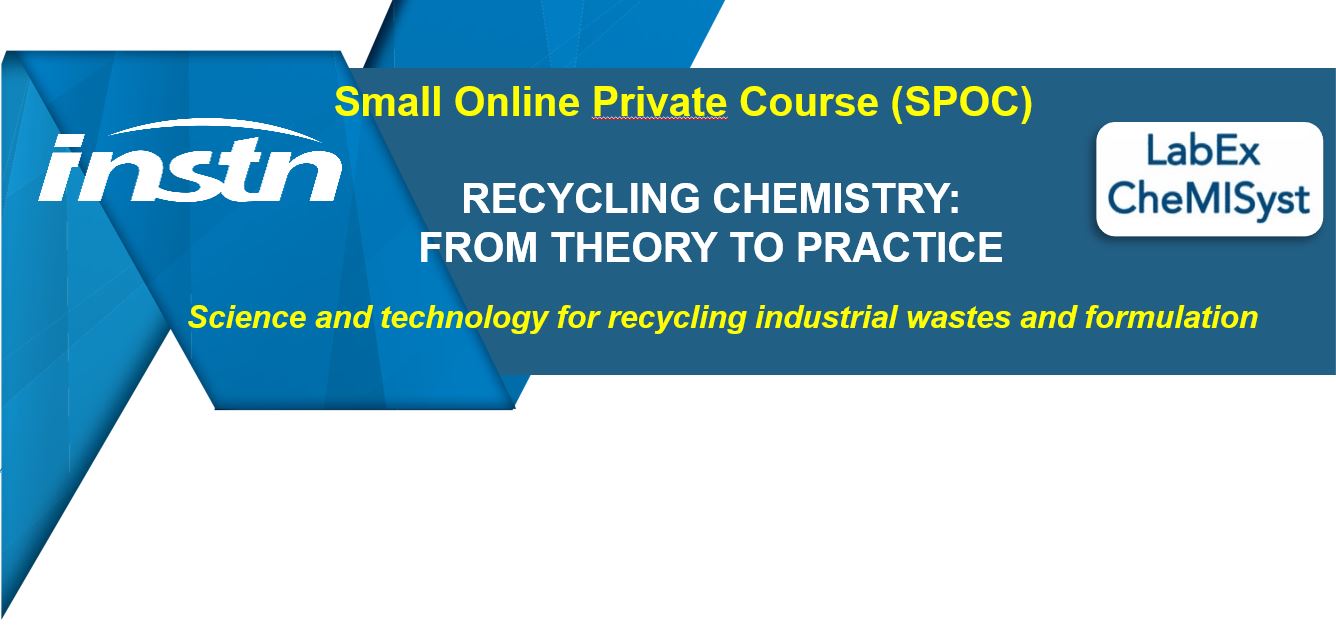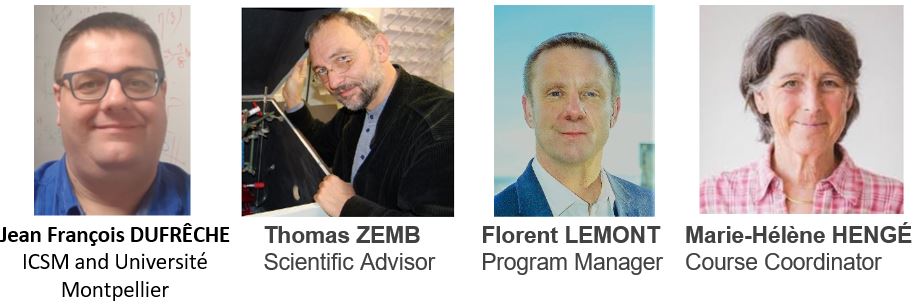
Cours de Chimie Séparative

Mixing and separating for recycling of metals such as contained in electronic waste requires to master dissolution, formulation of complex fluid, selective extraction and finally re-mixing of electrolytes in order to obtain high performance recycled material with new economic value.

Pedagogic content: Pr Thomas Zemb, Funding director of the Institute for Separation Chemistry in Marcoule, Professor at the INSTN
Theoretical parts: Pr Jean-François Dufrêche, Professor, Montpellier University
Practical parts, organisation and broadcast: Florent Lemont Research Director & Director of the INSTN-Marcoule
Bachelor level in physical chemistry
- You will receive an invitation from « digital learning no reply »
- Follow the access information in the participant’s guideline
1. Solvents and solubilisation
2. Specific ion effects in solution
3. Specific ion effects at interfaces
4. Deep eutectic solvents
5. Establishing ternary phase diagrams
6. Separation process and operating diagram
7. Chemical potential: a general view at equilibrium
8. Osmotic pressure units and relative humidity
9. Osmolarity of solutes, Raoult and Henry laws
10. Measurement and control of osmotic pressures
11. Osmosis and electrolyte solutions
12. Dynamics in electrolytes solution: a panorama
13.Binary mixtures: water and ionic surfactant
14. Binary mixtures: lipids
15. Electrochemistry of Oxidation state of actinides
and lanthanides
1. Establishing binary phase diagram
2. Pseudo-phases versus microphases
3. Reading binary phase diagrams
4. Ternary phase diagram: the phase prism and its cuts
5. Ternary phase diagram: curvatures
6. Contacting two liquids for extraction
7. Basis of liquid-liquid extraction: chemistry and molecular forces
8. Definition and measure of the free energy of transfer
9. Steps in free energy as molecular mechanism for transfer
10. Interfacial term: chains and their entropy
11. Basic concepts of liquid formulation
12. Lessons from reading ternary phase diagrams
A.FORMULATION FOR SOLUBILISATION
1. Lessons from ternary phase diagrams
2. Basic concepts of liquid formulation
3. Using hydrotropes for solubilisation and oxidation control
B. LIQUID-LIQUID EXTRACTION
1. Liquid–liquid extraction at mesoscale
2. Solubilisation in Ionic liquids
3. Cloud point extraction in practice
4. Macrosocopic modelling: flux and mass balance
5. Devices used in liquid-liquid extraction
6. Apparatus designing
7. Pulsed column functioning
C. FLOTATION AND SEPARATION
1. Liquid gas separation: principles of flotation process
D. SEPARATION BY CENTRIFUGATION
1.Brief history of analytical centrifugation
2.Analytical centrifugation
3.Applications
4.Separation of nanoparticles mixtures
E. SEPARATIONS IN THE NUCLEAR FUEL CYCLE
1.Marie Curie’s fractionated co-cristallisation
2. "Why recycling the spent fuel? "
3. Head of the extraction plant: from used fuel to solution
4. The PUREX process : Separation and purification operations
5. The PUREX process: Technologies of liquid-liquid extraction
6. Recovery of reactants and effluent treatment
7. Oxalic precipitation and metal oxide fabrication
8. Mixing oxides for refrabrication of fuels

Accéder aux programmes des cours de Chimie Séparative des années précédentes :